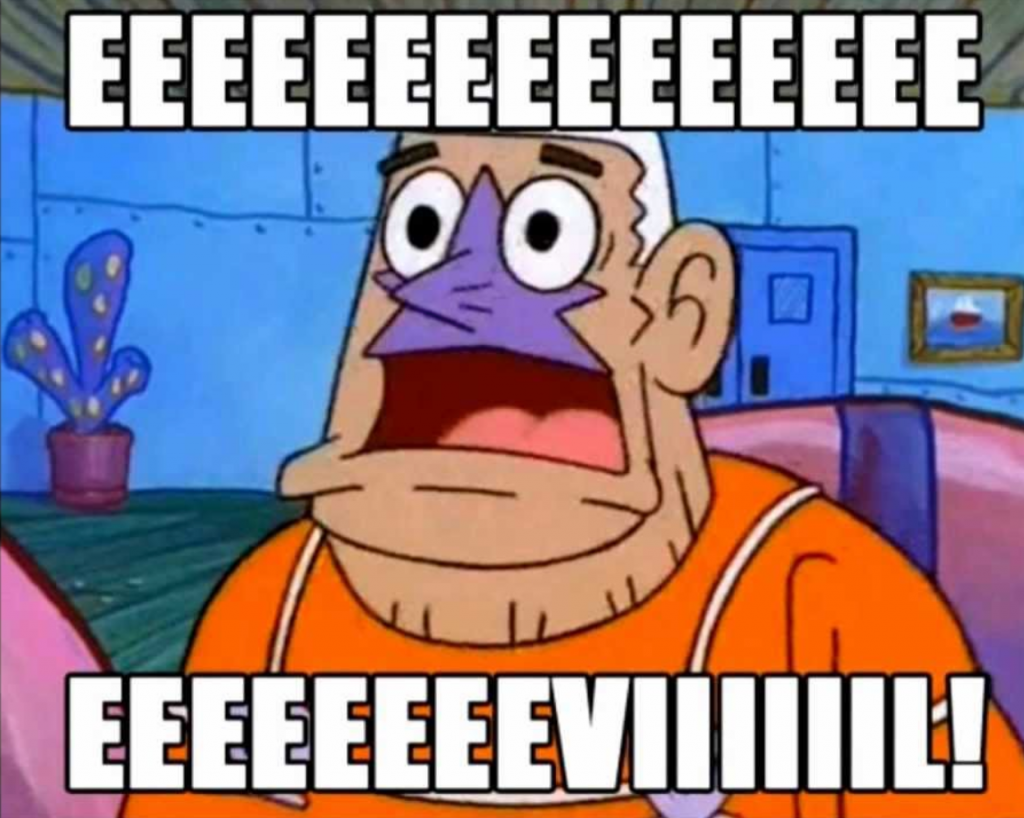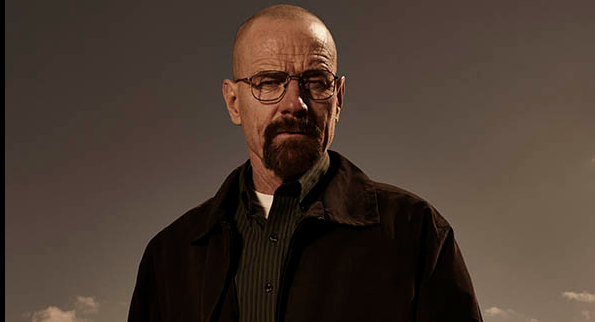Playing as the bad guy is something unique to videogames and a specific niche. In the last few weeks between Destroy All Humans, Maneater, and Carrion, I got to be an evil alien, an evil shark, and… another evil alien. We have seen games struggle with the notion of letting the player’s evil impulses come out, and presents us with a discussion on why breaking bad is a lot harder than it sounds.
Antihero vs Villain
Many videogames messed around with the idea of being bad; during the early 00’s, the widespread use of “morality sliders” became prevalent in AAA games. However, morality sliders are one of the hokiest game systems in my opinion, and are not what we’re talking about today.
Many games like to say you’re bad, but you’re just an antihero. Yes, you are doing bad things, but they’re for the greater good. The problem I’ve had with Bioware’s use and storytelling is that being bad in their games means you’re a jerk, but you’re still saving the day from the bad guy. Even the title Overlord that has you playing a Sauron-looking villain still has you saving the day from another evil force. The plot point “bad guys fighting bad guys” is often the story of games featuring the antihero archetype.
The games mentioned at the start make no bones about it: You are the bad guy doing bad things, but the issue the game industry has is what does it mean to be bad?
What is Evil?
When it comes to depicting violence and disturbing imagery, it has been held true that the more over the top and unrealistic it is, the more palatable it becomes. Watching Kratos slice and dice monsters in God of War is an exciting experience…now if he was doing that in a park or public setting with normal people, that would be a different story.
When videogames look at good and evil, it’s always taken to the extremes. Playing the bad guy often means playing a cartoon character. Even extreme examples like Grand Theft Auto play up the fact that the world is highly exaggerated and not meant to be a real place. Even then, the player is constantly being told that the people they’re fighting (in story missions) are other bad guys.
A few years ago there was a controversial game called Hatred that involved you playing a character who went on a rampage in a real-world setting, and the character was designed so over the top that it came off as a cartoon and criticized for repetitive gameplay.
And of course, there was the famous “No Russian” level in the Call of Duty series as one of the few cases of depicting a terror attack in a realistic setting.
It’s rare to see a game like Destroy All Humans where the main character’s goal involves targeting innocent characters and being rewarded for it, but again, “alien invader” is not a realistic point of view. The closest we’ve gotten to a really good villain with pathos in a game would be someone like Handsome Jack in Borderlands 2, but it’s a character that the player doesn’t control.
The game industry still treats villains like they’re Universal Studios Monsters, while TV has characters like Walter White. Speaking of Breaking Bad, that takes us to one area where videogames fail the most at.
Showing vs Glorifying
As we’ve talked about before, the interactivity of the videogame medium is one of the strongest aspects of game design. However, being in control over the situation raises questions when it comes to showing and having the player engage in disturbing behavior.
There is a fine line in any medium of showing something awful and glorifying it. For videogames that are meant to cast the player as the one in control or the most important character, it can be viewed as poor taste to allow them to engage in this kind of content if we’re talking about the real world. Imagine for a second a videogame that allows players to commit sexual assault as part of the core gameplay loop and be rewarded for doing so, which would be followed immediately by boycotts and congressional hearings.
While Maneater does take place in a loosely realistic setting with killing innocent people, we’re still playing as a shark that can harness electricity to fight off boats. There are plenty of mobile games that involve you running a gang or drug empire, but I bet none of them lean into the impact those places have on the world around them. How many people would feel good about playing a game that shows the deterioration of the people and neighborhoods around them?
And it’s for that reason why games that do allow the player to play the bad guy, that it’s rarely in the real world. In the game Dungeon Keeper, you are spreading your doom and destruction all over the world, but there’s no real-world precedent for an army of monsters building dungeons. Other mediums are fine with ending the story on an unhappy ending; not counting games that have multiple endings. The final episode of Breaking Bad didn’t end with Walter getting a big congratulations party and a banner saying, “You Win!”
A Tragedy vs a Statistic
There is a famous quote by Stalin: “The death of one man is a tragedy. The death of millions is a statistic,” that I think about when it comes to the depiction of videogame violence. When people discuss the most violent games, they think of titles like Mortal Kombat, Grand Theft Auto, or Hotline Miami. However, those body counts pale in comparison to games like Plague Inc or Defcon — where both titles end with the extinction of the human race.
People are fine with violence if it’s not meant to be realistic. Some titles can get away with the player being bad when the player themselves is not in the game, but kind of like a force or intelligence for the bad guys. With Zombie Night Terror, the player is never shown as being in the game but acts as the driving force for the zombie attacks.
The only titles I can think of that let players actively play as a violent monster going after regular people would be Carrion and Dead by Daylight. Both titles in a way desensitize the player to the killing — Carrion making it for healing and Dead by Daylight for scoring purposes.
This is why people can find these games uncomfortable and are the complete 180 from the low stakes games that we discussed in a previous post. Recently, there have been discussions over the treatment of people working on games like Mortal Kombat 11 and the Last of Us 2 by showing them depictions of violent acts to be inspired by when designing their graphic scenes. There is a greater topic here regarding forcing people to see this kind of imagery that we don’t have space here to explore.
Being Bad
Making a story in any medium centering on the bad guy requires a level of maturity when handling the topic. Not all villains are concerned with laughing maniacally while twirling their mustaches, and it takes a different kind of writer to make a story where bad things happen to good people that keeps the audience engaged.
To quote John Barth: ” Everyone is necessarily the hero in his own life story.” The challenge when it comes to games is getting that point across without once again glorifying the actions of the main character. Videogame writing has evolved considerably over the last decade, and now we’re just waiting on someone to make our own version of Walter White.
To end on, can you think of games that did a good job of making a bad guy (it doesn’t have to be player-controlled) that isn’t just an obstacle for the player to fight?
If you enjoyed my post, consider joining the Game-Wisdom discord channel open to everyone



